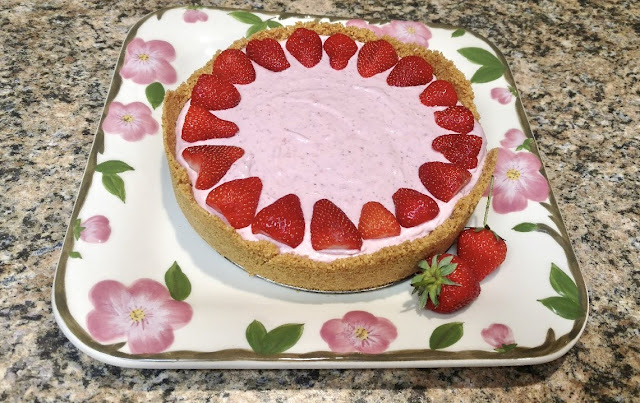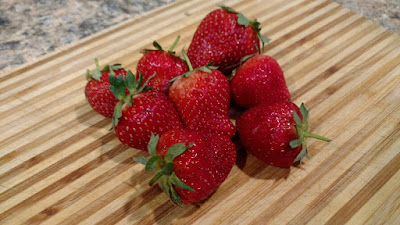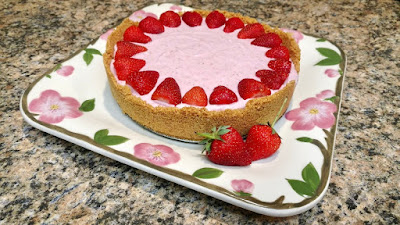
Recipe: Fresh strawberry no-bake cheesecake just needs a fridge
 |
| No oven was turned on in the making of this fresh strawberry cheesecake. (Photos: Debbie Arrington) |
It was too hot to bake this Mother's Day weekend -- and I needed to make a special dessert.
Newly vaccinated, our family was gathering for the first time in many months. I had all the ingredients for a conventional cheesecake (the original plan) topped with home-grown strawberries.
Instead of turning on the oven, I mixed the strawberries with the cream cheese for a light and delightful no-bake cheesecake.
This recipe was inspired by one featured recently in Relish magazine. (The magazine called it "Strawberry Cream Cheese Tart.")
Made in a springform pan, it looks like a baked cheesecake, but has a fluffier texture -- it has no eggs and only one package of cream cheese. It can also be made in a 9-inch pie pan.
 |
| Strawberries have done well this year in the garden. |

Comments
0 comments have been posted.Sacramento Digs Gardening to your inbox.
Sites We Like
Garden Checklist for week of July 21
Your garden needs you!
* Keep your vegetable garden watered, mulched and weeded. Water before 8 a.m. to reduce the chance of fungal infection and to conserve moisture.
* Feed vegetable plants bone meal, rock phosphate or other fertilizers high in phosphate to stimulate more blooms and fruiting. (But wait until daily high temperatures drop out of the 100s.)
* Don’t let tomatoes wilt or dry out completely. Give tomatoes a deep watering two to three times a week.
* Harvest vegetables promptly to encourage plants to produce more. Squash especially tends to grow rapidly in hot weather. Keep an eye on zucchini.
* Pinch back chrysanthemums for bushy plants and more flowers in September.
* Remove spent flowers from roses, daylilies and other bloomers as they finish flowering.
* Pinch off blooms from basil so the plant will grow more leaves.
* Cut back lavender after flowering to promote a second bloom.
* It's not too late to add a splash of color. Plant petunias, snapdragons, zinnias and marigolds.
* From seed, plant corn, pumpkins, radishes, winter squash and sunflowers.